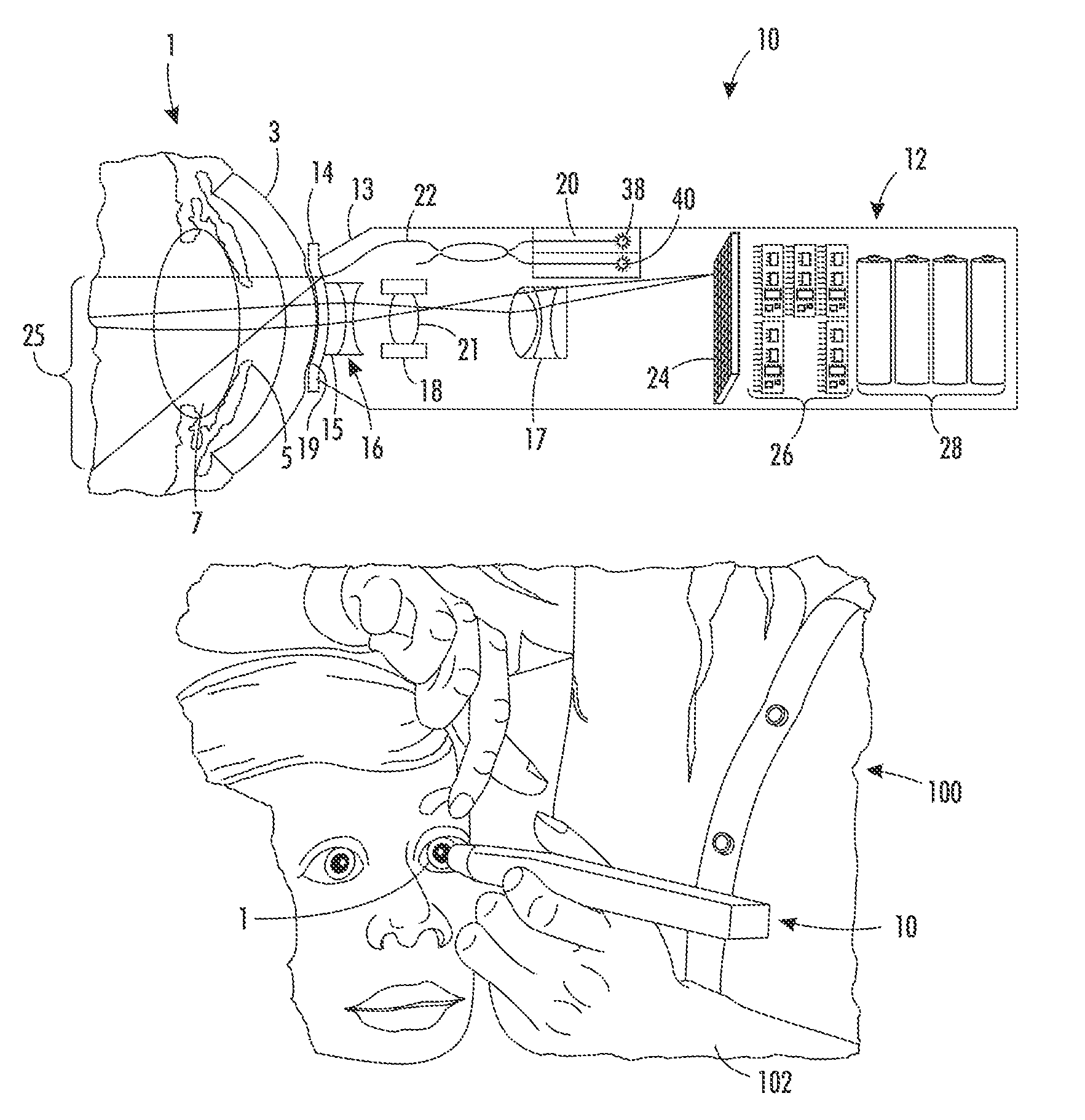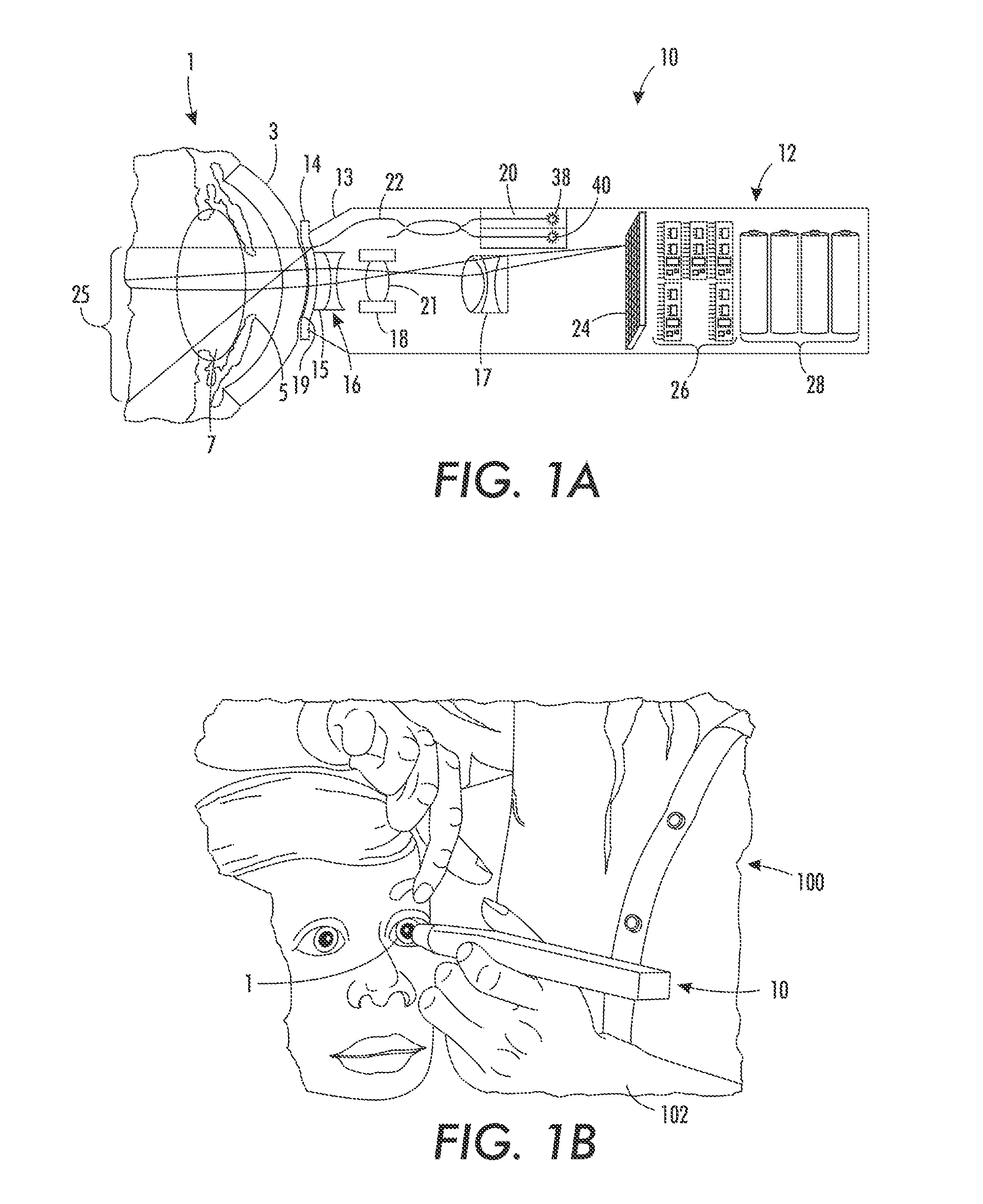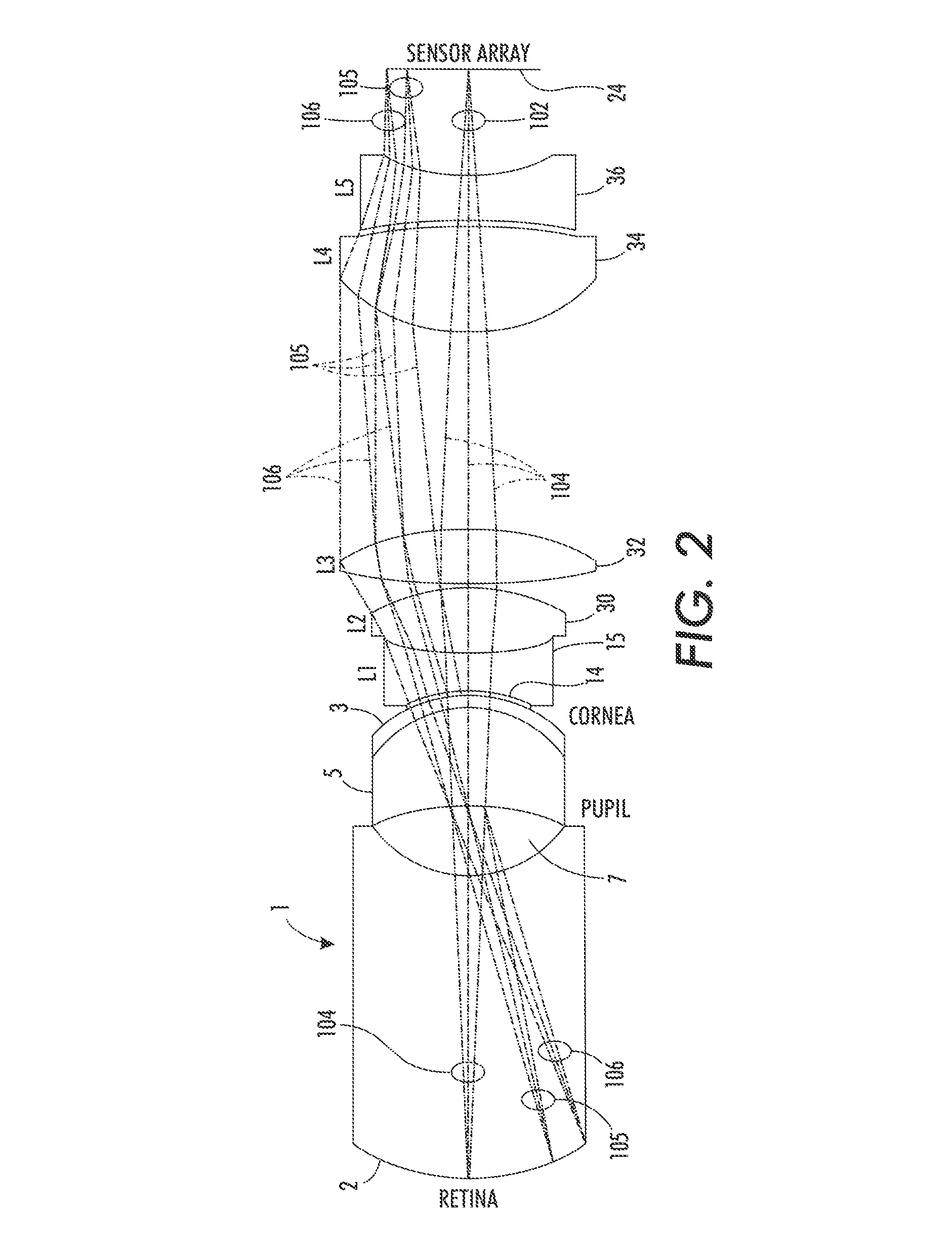Portable fundus camera
a camera and camera body technology, applied in the field of imaging, can solve the problems of many factors, visual loss, and untoward health event of vision loss, and achieve the effects of less loss of data, convenient use, and improved patient car
- Summary
- Abstract
- Description
- Claims
- Application Information
AI Technical Summary
Benefits of technology
Problems solved by technology
Method used
Image
Examples
Embodiment Construction
[0054]For a general understanding of the present invention, reference is made to the drawings. In the drawings, like reference numerals have been used throughout to designate identical elements. The description provided herein may identify certain components with adjectives such as “top,”“upper,”“bottom,”“lower,”“left,”“right,” etc. These adjectives are provided in the context of the orientation of the drawings, which is arbitrary. The description is not to be construed as limiting the instant fundus camera to use in a particular spatial orientation. The camera may be used in orientations other than those shown and described herein.
[0055]In describing the present invention, a variety of terms are used in the description. As used herein, the term “fundus” is used with reference to the eye, and is meant to indicate the interior surface of the eye, opposite the lens, including the retina, optic disc, macula and fovea, and posterior pole.
Overview
[0056]The retinal imaging system of the i...
PUM
 Login to View More
Login to View More Abstract
Description
Claims
Application Information
 Login to View More
Login to View More - R&D
- Intellectual Property
- Life Sciences
- Materials
- Tech Scout
- Unparalleled Data Quality
- Higher Quality Content
- 60% Fewer Hallucinations
Browse by: Latest US Patents, China's latest patents, Technical Efficacy Thesaurus, Application Domain, Technology Topic, Popular Technical Reports.
© 2025 PatSnap. All rights reserved.Legal|Privacy policy|Modern Slavery Act Transparency Statement|Sitemap|About US| Contact US: help@patsnap.com



